Outsourcing strategies have witnessed remarkable growth and demand in recent years, offering businesses and startups an effective means to overcome challenges. Mastering effective outsourcing strategies can be the key to gaining a competitive advantage. While it offers various benefits like cost savings, access to specialized skills, and scalability, it's not without its challenges.
Aloa, an expert in software outsourcing, helps businesses and startups confront these challenges strategically. They offer a comprehensive process that involves identifying outsourcing objectives, establishing a suitable staff augmentation model, and minimizing risks associated with intellectual property issues. Aloa ensures its clients meet and exceed their business goals by focusing on effective communication and monitoring performance indicators.
This blog will delve into the world of outsourcing strategies, including the evolution, types of outsourcing, crafting effective strategies, and the benefits it brings. We'll also explore the current trends in outsourcing, giving you valuable insights into the best way to position your business for success in 2023. By the end of this blog, you will be well-equipped to harness the power of outsourcing and elevate your business to new heights.
Let's dive in!
What is an Outsourcing Strategy
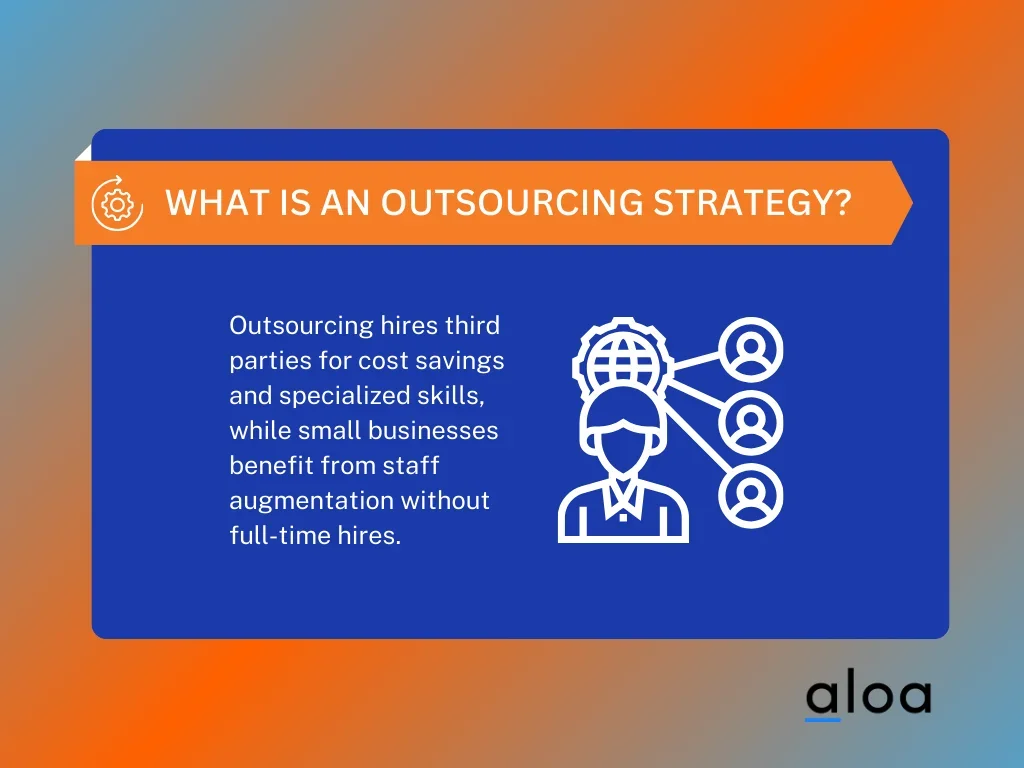
Outsourcing is the business practice of hiring a third party to perform services or create goods that could be done in-house. This approach allows companies to focus on their core competencies while a service provider takes care of specific job functions or business processes.
Outsourcing strategies serve as comprehensive plans that guide businesses in effectively utilizing external resources for services like software development, customer support, and technical support outsourcing in the Philippines. A successful outsourcing strategy often hinges on choosing a suitable outsourcing engagement model and aligning it with the business's strategic position. The main reasons for outsourcing often include:
- Reducing costs
- Tapping into specialized skill sets
- Freeing internal resources.
Small businesses can significantly benefit by adopting the suitable staff augmentation model. By engaging with an experienced technical staffing or software firm, a company can better position itself in a particular industry without the financial exposure of hiring full-time, in-house staff.
Different Types of Outsourcing
Outsourcing has become an essential component of modern business operations, helping companies enhance efficiency and concentrate on their core strengths by leveraging external expertise and resources. This article delves into different outsourcing strategies that organizations can implement to attain their objectives.
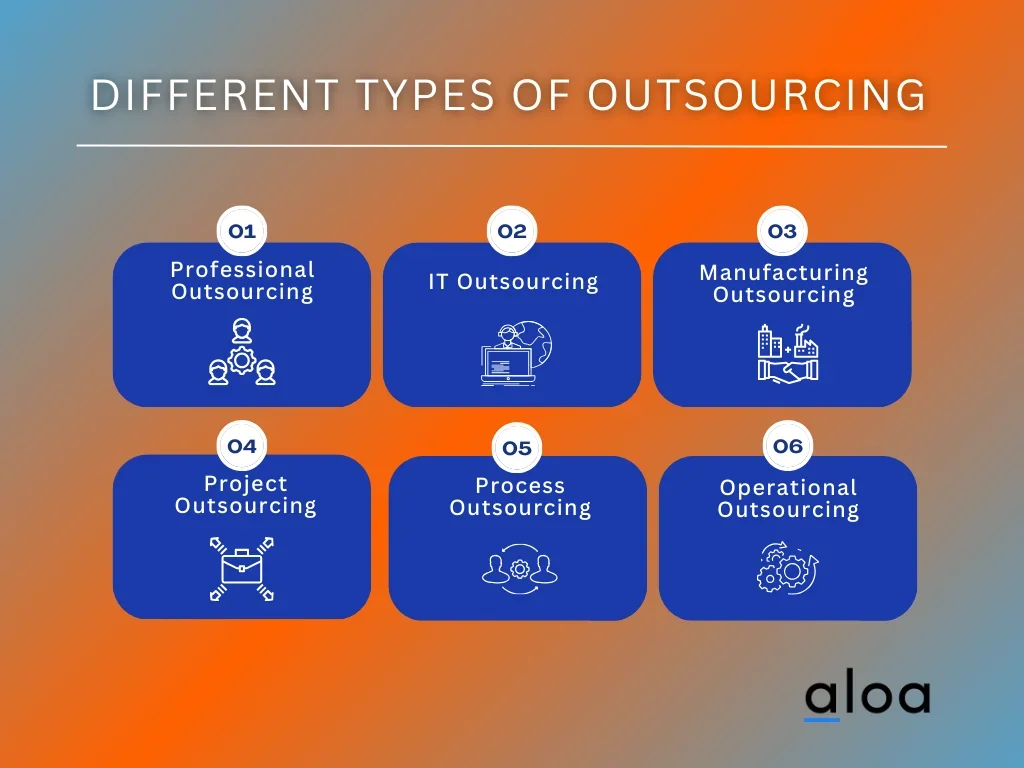
Professional Outsourcing
Many businesses consider professional outsourcing a strategic approach for handling specific tasks or functions. This can range from legal and accounting services to human resources support. By leveraging the expertise of external professionals, companies can ensure compliance and efficiency in these crucial areas. Outsourcing allows organizations to tap into specialized knowledge without needing in-house expertise, alleviating the burden on their internal resources.
IT Outsourcing
IT outsourcing is a complex strategy that includes offshore, nearshore, and onshore options. Offshore outsourcing involves hiring IT services from a faraway location, typically in another country, to lower expenses. These strategies enable companies to customize their IT outsourcing to match their budget and resource requirements.
Manufacturing Outsourcing
Many industries rely on manufacturing outsourcing, especially those with crucial production costs. Companies choose to subcontract the manufacturing of their products to specialized facilities, whether located domestically or overseas. This approach allows organizations to scale production, minimize labor and operational experiences, and concentrate on product design and marketing. Manufacturing outsourcing plays a vital role in global supply chains.
Project Outsourcing
Project outsourcing is a versatile strategy that enables companies to entrust specific projects to external partners. These projects can range from software development and marketing campaigns to construction endeavors. By outsourcing projects, organizations gain access to specialized skills and resources for a defined period, which helps reduce the requirement for long-term commitments and investments.
Process Outsourcing
Process outsourcing is a strategy where companies outsource complete business processes or workflows. This approach is commonly used for customer support, finance, accounting, and human resources. By partnering with specialized service providers, companies can optimize their processes and efficiently handle these functions, often at a reduced cost.
Operational Outsourcing
Operational outsourcing takes a comprehensive approach, where all operational functions of a business are outsourced. This includes tasks like managing IT infrastructure, supply chain logistics, and facilities management. By making this strategic decision, organizations can concentrate on their core strengths while leveraging the experience and efficiency of outsourcing partners.
6 Outsourcing Strategies Trends To Leverage in 2023
In 2023, organizations must stay at the forefront of current trends in outsourcing to remain competitive and efficient. In a world marked by technological advancements, understanding and leveraging current trends in outsourcing is more critical than ever. Let’s delve into 6 trends in outsourcing strategies to leverage in 2023.
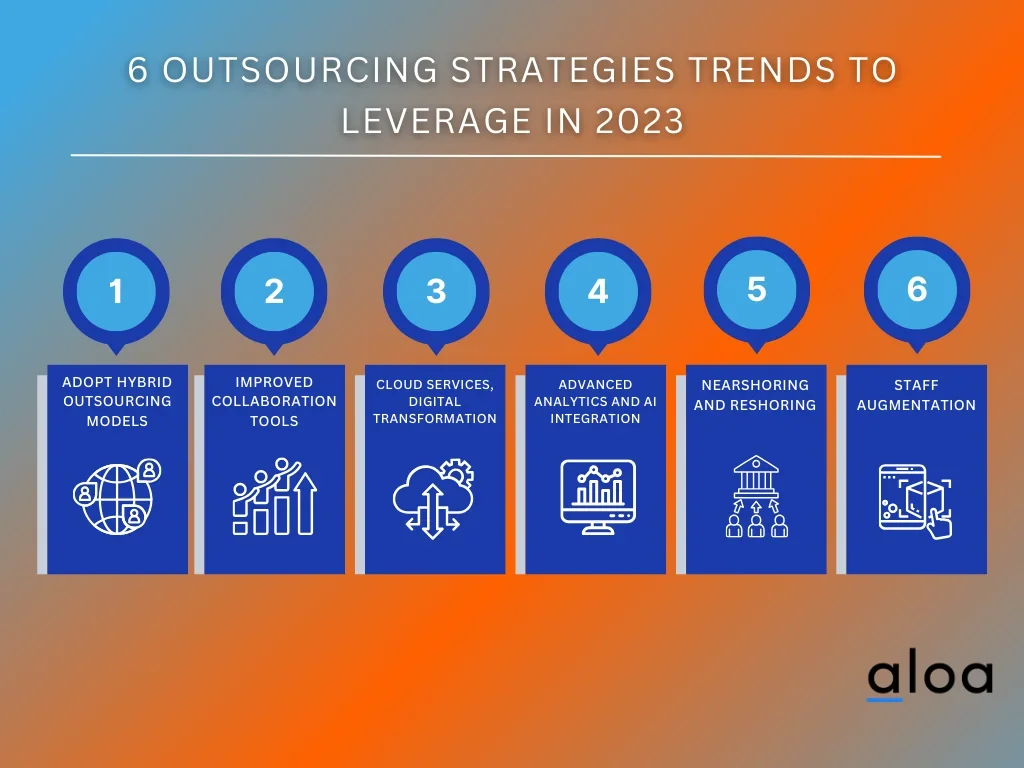
Embracing Hybrid Outsourcing Models
The traditional outsourcing model is giving way to a more hybrid approach. Hybrid outsourcing combines onshore, nearshore, and offshore outsourcing to optimize costs, quality, and access to talent. In 2023, businesses will increasingly embrace a hybrid outsourcing model to diversify their outsourcing portfolio and mitigate risks.
Companies can address specific operational needs more effectively by strategically blending different outsourcing models. For example, sensitive customer support functions might be kept onshore to ensure data security and cultural alignment, while IT development tasks can be outsourced offshore for cost efficiency.
Enhanced Collaboration and Communication Tools
Effective communication is a cornerstone of successful outsourcing. In 2023, there will be a growing emphasis on implementing advanced collaboration and communication tools to bridge geographical gaps and foster seamless interaction between in-house teams and outsourcing partners.
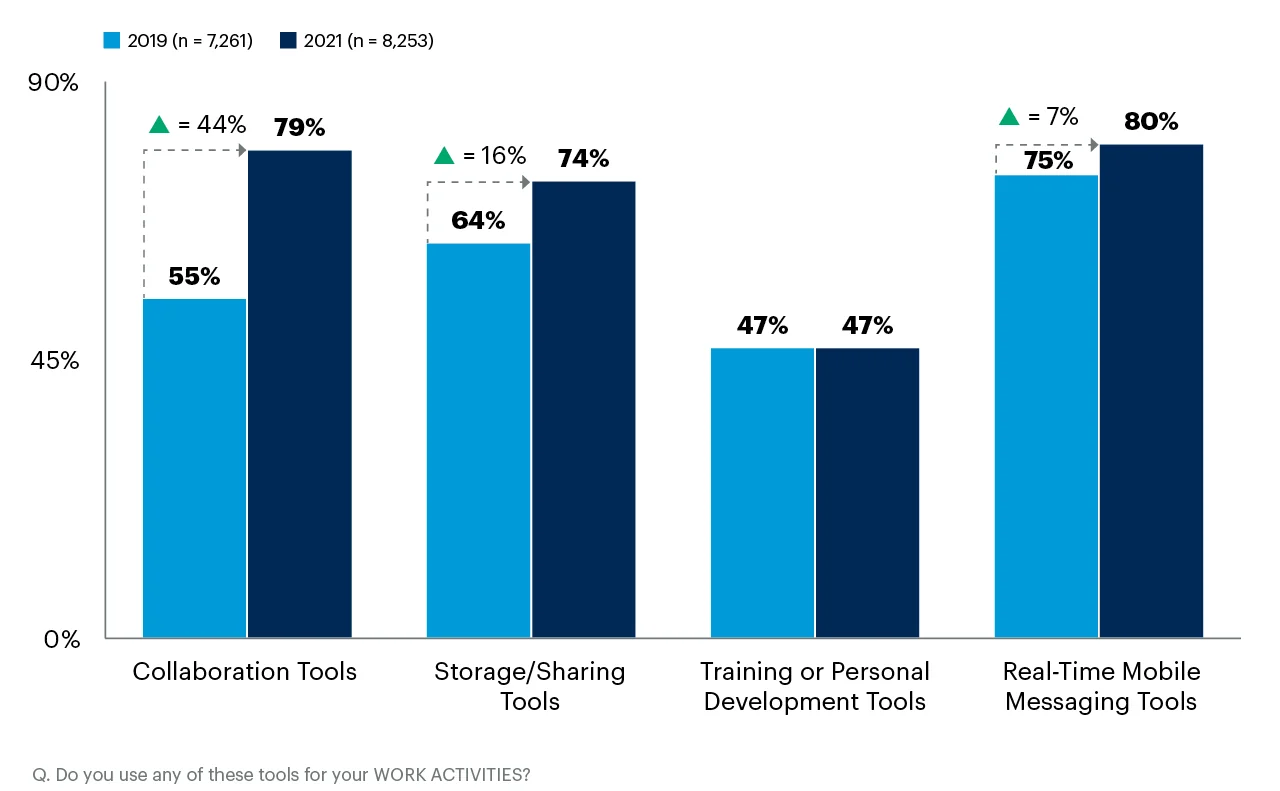
Meeting solutions surged during the pandemic, dropping in-person meetings from 63% in 2019 to 33% in 2021. This trend is expected to persist, with Gartner forecasting that by 2024, in-person meetings will decline from 60% to 25%, driven by remote work and changing workforce dynamics.
Leveraging this trend requires investing in collaborative technology and platforms that facilitate real-time communication, project tracking, and document sharing. Video conferencing, project management software, and secure data exchange solutions are examples of tools that can enhance collaboration in your outsourcing strategies.
Cloud-Based Services and Digital Transformation
The pandemic accelerated the shift towards digital transformation, and outsourcing strategies are following suit. Cloud-based services are becoming more integral to modern business operations. Outsourcing partners increasingly offer cloud solutions, enabling companies to scale, innovate, and securely access data and applications from anywhere.
By leveraging cloud-based services through outsourcing, businesses can streamline operations, enhance flexibility, and reduce infrastructure costs. Cloud technology can facilitate remote work, making it easier to adapt to changing work environments, which is particularly relevant in light of the ongoing global shift towards remote work.
Advanced Analytics and AI Integration
Data-driven decision-making is at the forefront of business strategies, and outsourcing providers are tapping into this trend by offering advanced data analytics and AI solutions. Outsourcing partners can use AI and machine learning to analyze large datasets to provide actionable insights, helping businesses make more informed decisions.
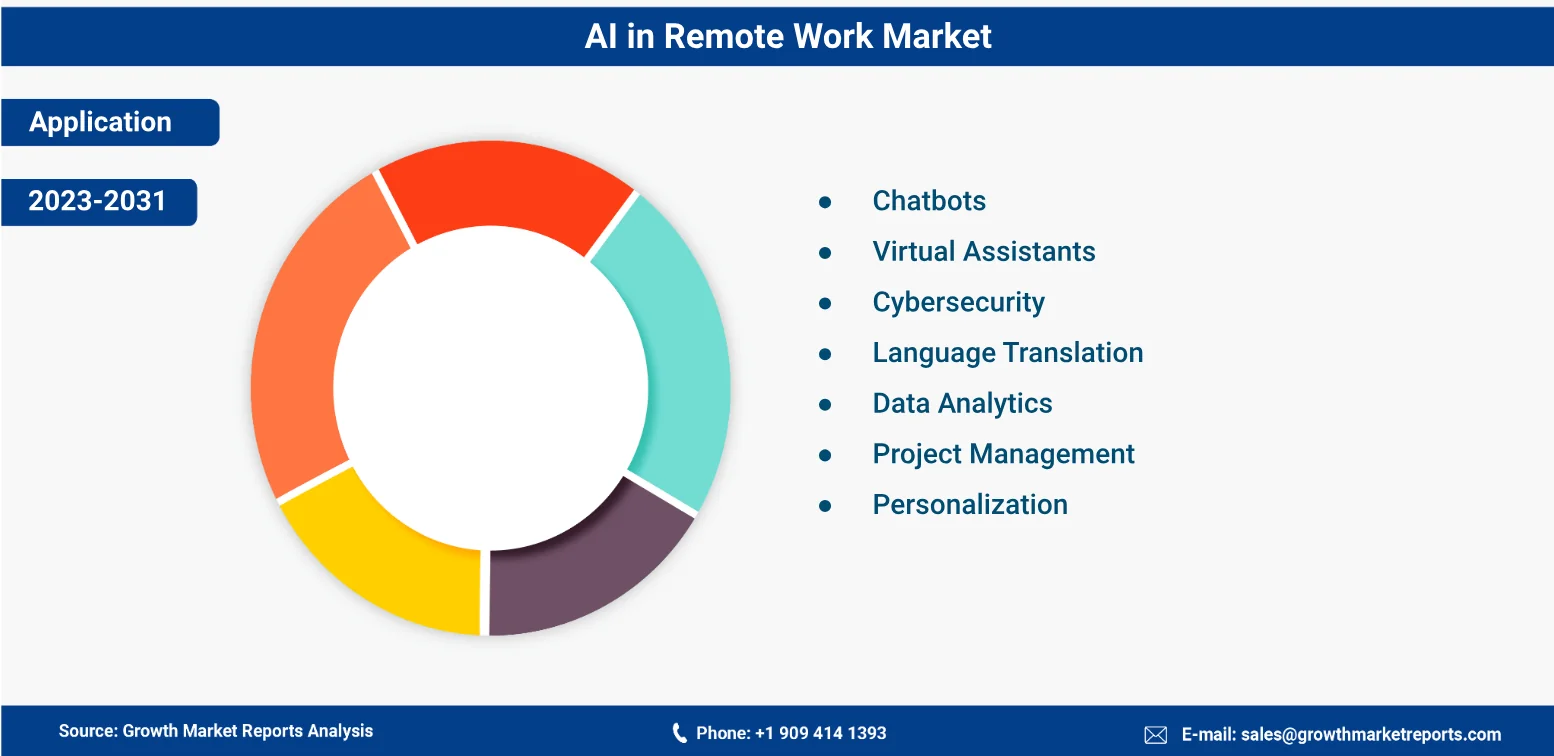
The AI in the remote work market is categorized by application, including chatbots, virtual assistants, cybersecurity, language translation, data analytics, project management, and personalization. Data analytics is projected to grow significantly, improving customer experiences and enhancing security by identifying data patterns for government and business use.
Nearshoring and Reshoring
The global pandemic exposed the vulnerabilities of offshore outsourcing, leading to a resurgence in nearshoring and reshoring trends. Many businesses are shifting their outsourcing operations closer to their home country, favoring nearshore or onshore partners to reduce supply chain disruptions and address the challenges of remote work.
Consider the benefits of nearshoring or reshoring, such as improved communication, proximity, and cultural alignment. These strategies can help businesses maintain operational resilience and reduce risks associated with geopolitical uncertainties and logistics disruptions.
Staff Augmentation
Staff augmentation is gaining traction as a strategic approach. It involves blending your in-house team with outsourced talent to create a flexible, scalable, cost-effective workforce. This approach allows you to quickly adapt to changing demands and access specialized skills without the commitment of full-time hiring.
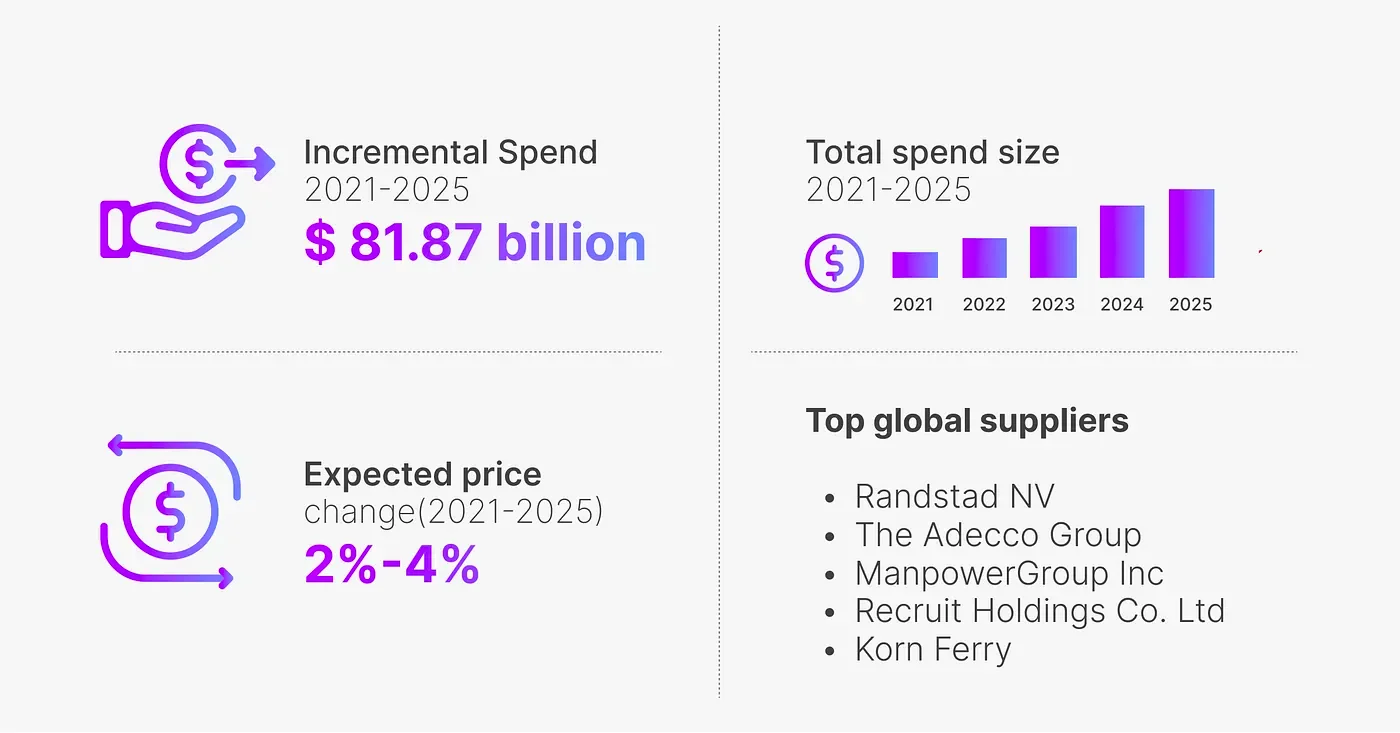
Globally, there is a growing trend towards staff augmentation, particularly within IT staff augmentation. This surge in popularity is primarily driven by the substantial advantages and assistance it provides businesses. Based on market predictions, IT staff augmentation is expected to experience a steady compound annual growth rate (CAGR) of 3.53% from 2021 to 2025, resulting in a total expenditure of $81.87 billion.
For example, if you have a core in-house development team, you can augment it with outsourced developers during peak project periods. This combination of in-house and outsourced talent creates a dynamic workforce that can drive innovation and improve project efficiency.
How To Craft An Effective Outsourcing Strategies
Crafting effective outsourcing strategies is crucial for any business looking to scale, save on costs, and optimize operational efficiency. Navigating the multifaceted outsourcing world can be your ticket to sustainable growth. Here are six steps to guide you through the process.
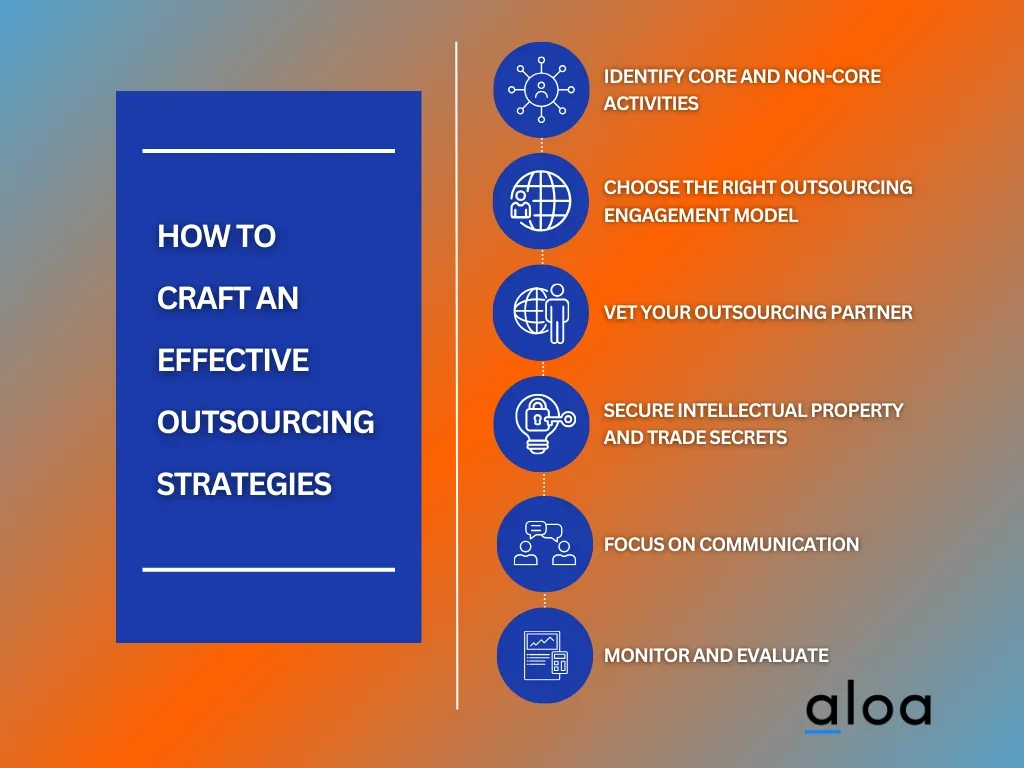
Step 1: Identify Core and Non-Core Activities
Identifying core and non-core activities is akin to decluttering your organization's responsibilities. The goal is pinpointing tasks and functions that directly contribute to your organization's competitive advantage and should remain in-house. These core activities are the lifeblood of your business, differentiating you from competitors.
On the other hand, non-core activities are tasks that are essential but do not necessarily distinguish you in the market. These can include:
- Back-office operations
- Administrative tasks
- IT support
- Data entry
- Customer support.
Recognizing the distinction between core and non-core activities allows you to prioritize where to allocate your resources and expertise effectively.
Outsourcing non-core activities frees up valuable time, manpower, and financial resources. This enables your team to concentrate on what they do best, ultimately improving productivity, innovation, and customer satisfaction.
Step 2: Choose the Right Outsourcing Engagement Model
Selecting the suitable outsourcing engagement model ensures the partnership aligns with your business objectives and goals. The choice between offshore, nearshore, and onshore outsourcing can significantly impact the efficiency and effectiveness of your outsourcing strategy.

- Offshore Outsourcing: This model involves contracting a service provider in a different country, often one with lower labor costs. It can be cost-effective, but consider time zone differences, language barriers, and cultural variations.
- Nearshore Outsourcing: In nearshore outsourcing, you partner with providers in neighboring countries. This model reduces some of the challenges associated with offshore outsourcing, such as time zone differences, while offering cost savings.
- Onshore Outsourcing: Onshore outsourcing keeps the work within your country, making communication and quality control more convenient. While it may be more expensive, it offers the advantage of a shared culture and language.
The key to choosing the suitable model is to align it with your specific needs and goals. For instance, onshore outsourcing might be best if you require high creativity and innovative thinking. If cost reduction is a primary concern and you can work around time zone differences, offshore outsourcing might be the way to go.
Step 3: Vet Your Outsourcing Partner
Choosing the right outsourcing partner is a critical decision. To ensure a successful partnership, you must conduct a thorough vetting process. Evaluating potential partners' experience, expertise, reputation, and track record is essential.
Moreover, ensure that the outsourcing partner complies with legal and ethical standards. Intellectual property rights and trade secrets are often at stake in outsourcing relationships. Work with legal executives to establish watertight contracts that protect your interests.
Aloa has developed a vetting playbook that streamlines the selection process, offering an additional layer of quality control and assurance. The playbook usually includes a comprehensive checklist and a set of criteria that can be tailored to your specific requirements. By aligning yourself with a reliable partner like Aloa, you can rest assured that the most critical aspects of the vetting process—from technical expertise to legal compliance—are being meticulously taken care of.
Step 4: Secure Intellectual Property and Trade Secrets
Protecting your intellectual property and trade secrets is paramount when crafting effective outsourcing strategies. Regardless of the tasks being outsourced, you must implement safeguards to maintain confidentiality and prevent information leakage. These safeguards may include non-disclosure agreements, encryption protocols, and secure data storage practices.
Collaborate with your outsourcing partner to establish rigorous security measures. An experienced partner will understand the importance of protecting your sensitive information and will be willing to work with you to ensure it remains confidential.
Step 5: Focus on Communication
Good communication is the cornerstone of any successful outsourcing strategy. A lack of effective communication can lead to misunderstandings, missed deadlines, and quality issues. To avoid these pitfalls, it's crucial to establish a robust communication plan from the outset.
Designate an outsourcing manager or coordinator who will serve as the main point of contact between your organization and the outsourcing partner. This individual should deeply understand the project, your goals, and your expectations. Regular meetings, status updates, and progress reports should be part of your communication plan.
Leverage technology for seamless communication. Collaborative tools, project management software, and video conferencing platforms can bridge the gap between teams, even if they are located in different parts of the world.
Step 6: Monitor and Evaluate
Once your outsourcing strategy is in full swing, continuously monitoring and evaluating the process is essential. Regularly review the quality of delivered work and compare it to your expectations. Identify any issues, bottlenecks, or areas for improvement.
Quality control should be a continuous process, not just a one-time assessment. Implement key performance indicators (KPIs) to measure the effectiveness of the outsourcing strategy. Adjust your approach as necessary to achieve better results.
Benefits of Leveraging Outsourcing Strategies to Software Development Process
In today's rapidly evolving business landscape, staying competitive means being agile and efficient. One of the strategies that companies are increasingly turning to is outsourcing their software development needs. Explore why you should consider outsourcing strategies for your software development projects.
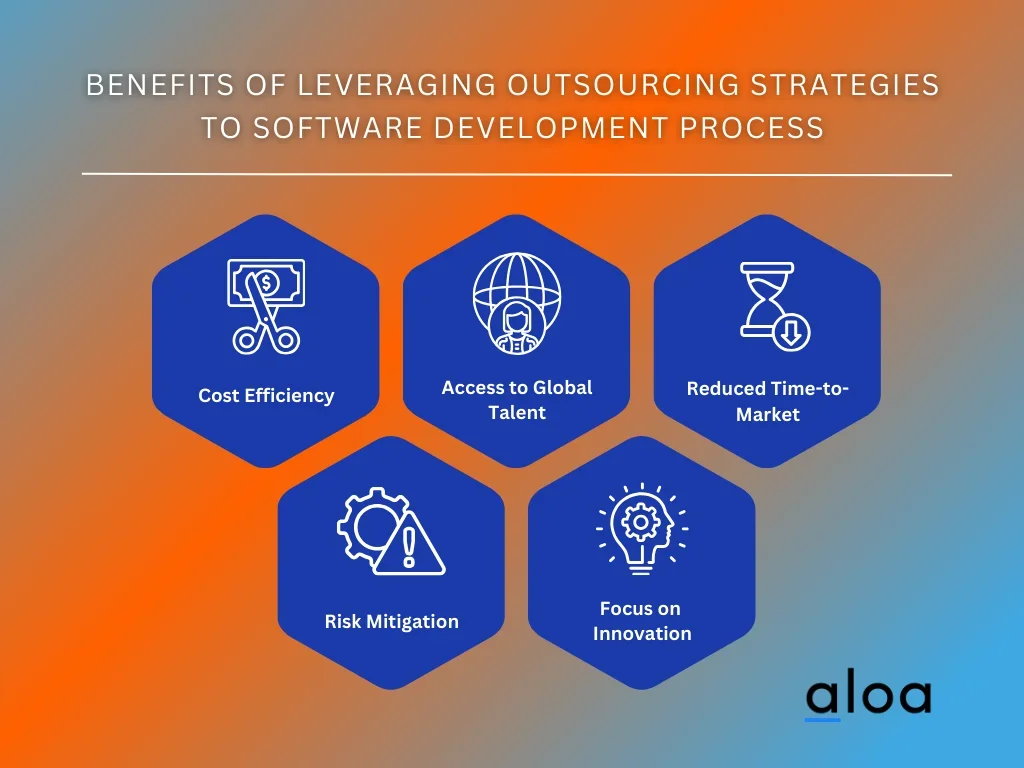
Cost Efficiency
One of the primary reasons to embrace outsourcing strategies in software development is cost efficiency. Developing in-house software often requires substantial hiring, training, and infrastructure investment. On the other hand, outsourcing allows you to tap into a pool of skilled professionals without the burden of long-term commitments. You pay for the work done, reducing fixed costs and increasing flexibility.
Access to Global Talent
Outsourcing opens the doors to a world of talent. You can choose from a vast pool of developers, designers, and experts from around the globe. This diversity can be a significant advantage, as it provides access to a wide range of skill sets and perspectives that can lead to innovative solutions for your software projects.
Reduced Time-to-Market
In today's fast-paced business environment, quickly getting your software to market can make all the difference. Outsourcing can accelerate your development process by leveraging experienced professionals well-versed in the latest technologies and best practices. This speed-to-market advantage can be a game-changer in gaining a competitive edge.
Risk Mitigation
You also share the risks with your outsourcing partner when outsourcing software development. They become accountable for meeting deadlines and ensuring the quality of the deliverables. This shared responsibility can mitigate potential risks during the development process.
Focus on Innovation
Outsourcing strategies can foster innovation. You can spark creativity and innovative thinking by collaborating with experts with diverse perspectives and experiences. This can result in software solutions that meet your current needs and position your business for future success.
Key Takeaway
Incorporating outsourcing strategies into your business can be a game-changer. When thinking about outsourcing strategies, you'll want to make informed decisions that align with your goals. Outsourcing strategies have evolved significantly, from basic cost-cutting measures to strategic partnerships.
When crafting your outsourcing strategy, it's vital to set clear objectives, select a suitable engagement model, and mitigate potential risks. Effective communication with your outsourcing partner is also critical. Leveraging current outsourcing trends can give you a competitive edge in 2023.
Outsourcing strategies offer numerous benefits and present many opportunities for businesses. Consider outsourcing your software development project to experts by contacting [email protected] to explore the possibilities. Your business's success could greatly depend on it.

